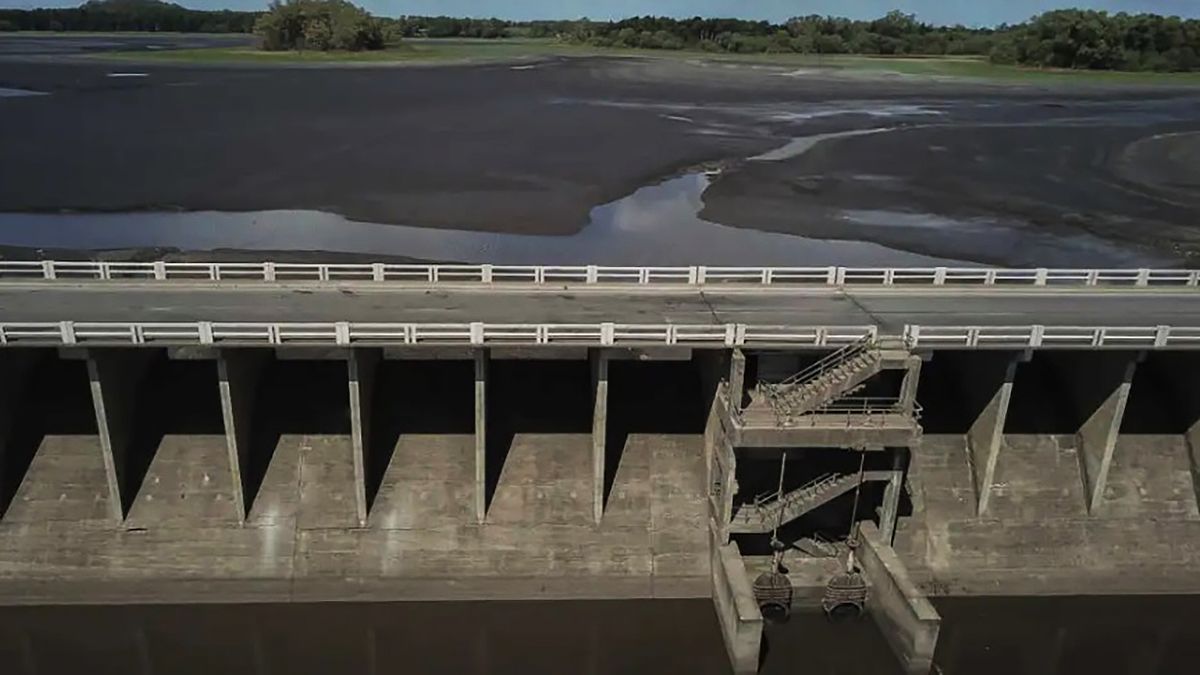immediate solutions for water crisis proposals by the government would be in final periods since, while the installation of the desalination plant coming from the United States seems to have completed its installation stage, the construction of the reservoir on the san jose river It is in the stages of adjustments and pumping tests.
The water crisis keep on talking in the Uruguay with works that, apparently, would be the momentary solution to the water emergency. A problem that would seem to be gradually being solved as progress in the construction and installation of the projects would seem to be late in reaching its goal.
The reservoir in San José, in the testing phase
The construction of the reservoir in the san jose river along with a series of 13 and a half kilometer pipes that will carry water to belastiqui to then supply the plant with Aguas Corrientes, seems to be in the last stage.
As confirmed by local media, the work of the transfer of the San José river to the Santa Lucía It is in the adjustment phase and pumping tests are being carried out.
The pipes for this work —imported from Brazil and Argentina- they cost 20 million dollars; while the work itself has a value of $14,936, totaling almost 35 million dollarss, according to data published by the newspaper. If the investment to build the emergency dam in Belastiquí —a total of 1,841,000 dollars—, the figure allocated by the government for infrastructure in relation to the water crisis is almost 37 million dollars.
On this amount, an estimated investment of 12 million dollars per month, aimed at measures for the most vulnerable population, in a context of inaccessibility to safe drinking water. The figures that will be invested in the Water Emergency Fund are not yet known.
The desalination plant that was long in coming
The desalination plant of the Technological University of Uruguay (UTEC) it was already installed in Salinas, Cannelloni. After his long arrival from USA by a question of space in the Hercules, the machinery located in the Laguna del Cisne Power Plant has the capacity to purify 150,000 liters per day from the water and from SBI reported that, in addition to removing salt, it can be used to treat and neutralize any eventuality related to other water components.
Plant works alone, without the need for operators, since the information is sent digitally. As reported by OSE, it is a portable Unit, Therefore, it can be transported with a trailer to different places in the territory, in case it is necessary in the context of a water emergency.
Regarding its operation, the coordinator of Water and Sustainable Development of the UTEC, Héctor García, explained in dialogue with Telemundo that “already the plant is processing water, but it will be ready we calculate Monday or Tuesday Of the next week”.
The permanent solution?
He Arazati project of the government, which promises to be the solution to the lack of drinking water in the metropolitan area and Montevideo, presented a series of environmental complications, according to a Location Environmental Viability Report, prepared by the consulting firm CSI Ingenieros and presented by SBI before him Ministry of Environment (MA).
Arazati could cause 93 types of environmental impacts in the area, of which 27 present a “significant negative potential”and, therefore, “need a specific evaluation”.
In addition to drinking water from Silver river to carry it through pipes to the homes of Montevideo and the metropolitan areathe Neptune project (as it is formally known), plans to build an artificial lagoonwhich will be a fresh water reserve.
In the report, it is stated that this artificial lagoon would modify “superficial runoff and the hydraulic regime of watercourses”, which would trigger in Soil “erosions” and the potential “contamination” of groundwateramong other problems.
In turn, it is found that the work will require the expropriation of some 250 hectaresand that the pipes must pass through some 114 standards, in an area of agro-forestry production, causing a “socioeconomic impact on the population” of the place.
Source: Ambito




